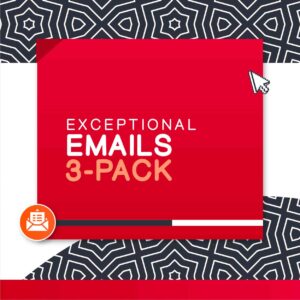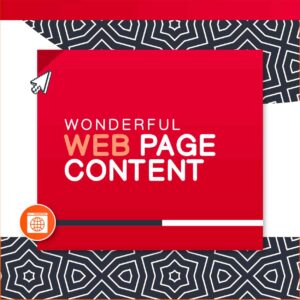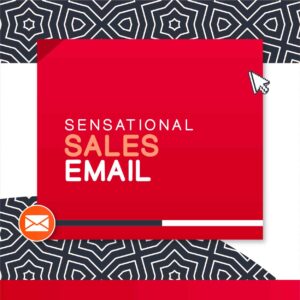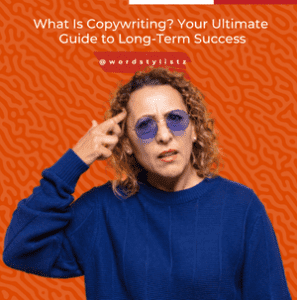
What Is Copywriting? Your Ultimate Guide for Long-term Success
What is copywriting? While the definition may vary slightly depending on who you ask, our straightforward definition is this: Copywriting is the art of having
The Product Lounge is now closed. All final orders will be delivered within 10 business days. Please see Terms and Conditions for more details.
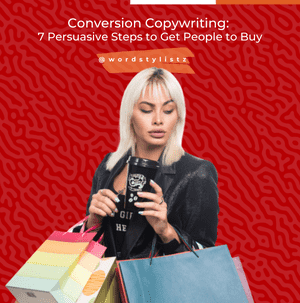
Conversion copywriting is all about understanding how to write compelling and persuasive copy that converts. And while that sounds straightforward, it takes a certain level of intention and skill to choose the right words to evoke enough emotion that persuades people to take a specific action.
Here at Word Stylistz, one thing we understand is that a remarkable sales message is at the heart of a brand’s ability to pull in more revenue, profits and customers. Translation: if you want the sales, you’ve got to know how to write compelling and persuasive copy that converts. And by the end of this blog post, you’ll learn what it takes to craft emotion-inducing, persuasive copy that turns website browsers into buyers.
Let’s dive a little deeper into what conversion copywriting is all about. The first thing to keep in mind is that conversion doesn’t necessarily mean you want your customers to buy something from you – at least not at that moment. Conversion is getting your audience to take some form of action, which can include:
So, what does all this mean in regard to understanding how to write compelling and persuasive copy that converts? The best way to get your customer to take immediate action is through clear, compelling, simple and persuasive content that educates them on the benefits of your product or service and makes them eager to buy from you specifically.
When it comes to knowing how to write compelling and persuasive copy, word selection and technique matter. While conversion copywriting doesn’t have to be complex, it does require technique, strategy and a clear understanding of your target audience. Simply telling them about how great your product is won’t move them to add it to their cart. To secure the sale, you have to get your customer’s attention, center their experience and convince them you have what they need.
If you want to write compelling and persuasive copy that converts your browsers into buyers, here are a few tips you can implement today to get you started on the right track:
The reality is even though your customers may not realize it, they’re reading conversion copywriting all the time! One of the keys to understanding how to write compelling and persuasive copy that converts is choosing the right words. And that means eliminating common, “old school” call to action (CTA) phrases from your content.
For example, the phrase “click here” is a CTA that’s overused and played out. Rather than saying “click here,” you should tie button text, for example, text to a desired benefit for the reader and phrase it in a confirming way such as, “Yes, I’m ready to overcome my money struggles.”
When it comes to knowing how to write compelling and persuasive copy that converts, the best of the best copywriters ask questions throughout their long-form sales content, such as sales and landing pages. These questions are typically used to paint the reader’s pain story and gain “confirmation” the seller understands the reader’s pain. This upfront understanding is vital in bridging a gap between the reader’s pain and the solution being offered.
Ultimately, the benefits of this technique are twofold as it relates to knowing how to write compelling and persuasive copy that converts: it piques your customer’s interest AND intrigues them to keep reading to discover how your product or service is the answer to their problem.
Your product or service is amazing, but making your sales email, social media post or product description all about you won’t convince them to buy it. Conversion copywriting relies on making your buyer feel seen by centering their experience rather than your own.
No one wants to purchase from someone who isn’t confident in what they’re selling. That’s why it’s important to avoid words like “just,” [hyperlink red text to: https://www.instagram.com/reel/CnPlkUFjVtN/?utm_source=ig_web_copy_link] “maybe,” “possibly” and “think” in your writing. These words express uncertainty and aren’t direct enough to get your point across quickly.
Don’t waste your words. When you say what you mean and mean what you say, your readers won’t hesitate to take action.
When you’re new to conversion copywriting, you might write the way you were taught in high school – stuffy and full of big words you found in a thesaurus. But when you understand the concepts and methods behind knowing how to write compelling and persuasive copy that converts, you’ll write for C’s as in cash for your customers vs. A’s from an English teacher.
That’s because conversion copywriting employs everyday language to meet readers where they are rather than attempting to sound profound. And one of the best ways to see if your copy passes the test is by reading it out loud. You want to sound like a human, not a robot, so this technique will reveal awkward writing so you can make your words more conversational and authentic.
When you’re ready to deliver your call to action, try making it negative instead of positive, like “don’t miss out on your chance to join this workshop.” Customers hate missing out, and this persuasive strategy will have them do a double take.
With conversion copywriting, you don’t want to get so caught up in the words that you forget the way the words look on the page matters, too. Break up chunky paragraphs, use numbers, add explanation points (when appropriate) and emojis (depending on the platform). These strategies make readers engage with your content, so your words make contact.
One of the best examples of conversion copywriting is this landing page from Basecamp. With its simple language and centering of the customer’s experience, it employs Strategies #3 and #5 to provide a solution to a problem in a direct, conversational and persuasive manner.
A popular example of conversion copywriting you’ve probably seen in your favorite grocery store is RXBAR’s use of simple and concise copywriting to persuade buyers that their bars are different, and therefore superior to ones with ingredients you can’t even pronounce. Consumers love transparency and giving buyers the value upfront sets them apart from the competition in a refreshing way.
Another great example of conversion copywriting is this ad from Medium’s “Our Story” page. With a straightforward, persuasive message, they speak directly to users’ frustration with social media platforms and position themselves as the alternative they need.
There you have it … 7 action-inducing ways to write compelling and persuasive copy that converts. Now, while these strategies will undoubtedly lead you toward dipping your toe in the conversion copywriting ocean, you’ll need more insight, guidance and training to master it.
And the good news is, with a Persuasive Copywriting Certification you can do just that. Getting certified in persuasive copywriting will show you how to master timeless, revolutionary persuasive copywriting strategies so you can craft better-performing ads, social media posts, emails, landing pages and other types of results-driving marketing communications.
Whether you want to advance your career, create more impactful marketing content or pursue a career in business and marketing, this course will give you the skills to accomplish your goals.
In 10 weeks, you’ll get the comprehensive training needed to excite, engage and motivate your audience to take action, and you can enroll on your own or at a local college or university.
Visit the Persuasive Copywriting Certification to learn more about the course so you can master the fundamentals of crafting copy that excites, intrigues and persuades audiences.

What is copywriting? While the definition may vary slightly depending on who you ask, our straightforward definition is this: Copywriting is the art of having
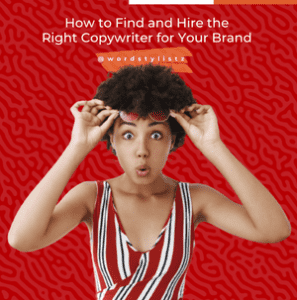
Finding and hiring the right copywriter for your brand is an important decision that can have a significant impact on the success of your online
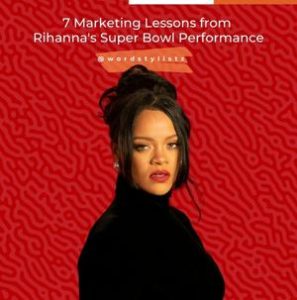
The Rihanna marketing strategy and her overall Savage-Fenty campaign are two prime examples of how to create an attention-grabbing content and stamp your brand in

What’s the difference between a sales page vs. landing page? In short, landing pages are used to gather contact information, while sales pages are used
